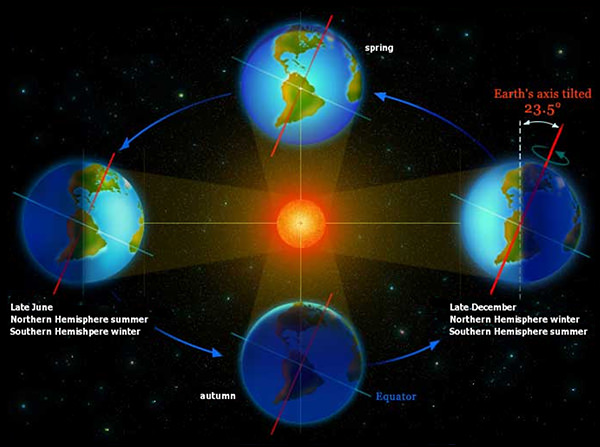These days it seems you can’t walk through a bookstore without bumping into a book or magazine pointing out the negative consequences of climate change. Everything from the hottest years on record to ruining astronomy can be tied to climate change. Now some new science lays another potential problem at climate change’s feet – the Earth is retaining more than twice as much heat annually as it was 15 years ago.
A team from NASA and NOAA found that the Earth’s “energy imbalance” doubled between 2005 and 2019. The energy imbalance is simple to understand but complex in its causes and impacts. It is the difference between the amount of energy absorbed by the Earth and the amount of energy emitted by it. Any increase in the energy imbalance means the overall Earth system is gaining energy, causing it to heat up.
Simple explanation of the energy imbalance.Credit – NASAeClips YouTube Channel
To quantify this change, the team used data from two separate sources – NASA’s Clouds and the Earth’s Radiant Energy System (CERES) and a system run by NOAA called Argo. CERES specializes in how much energy is entering and leaving the Earth. Most of the energy entering s in the form of solar radiation, while energy leaving the system could take a variety of forms, including some of that solar radiation bouncing off of white clouds.
Argo, on the other hand, estimates the rate of temperature increase for the oceans. 90% of the energy that is absorbed by the Earth system is absorbed into the oceans, so any significant energy imbalance would be seen as a heating up of the oceans.
Credit – NASA / NOAA
Data from both sensing platforms pointed to the same conclusions – that the Earth was absorbing more energy than it was emitting, that energy is then stored by the ocean, and the annual amount of energy stored has increased dramatically in the recent past. All of these findings have important implications for the future of understanding and coping with climate change.
First, understanding what caused the increase in absorbed heat in order to potentially mitigate it in the near future would be helpful. The researchers cite two main causes of the increasing energy imbalance. First was a decrease in sea ice and clouds, the white surfaces of which increase the planet’s albedo and therefore the amount of energy that is reflected back out into space. Some of that decrease in cloud coverage was caused by what is known as the Pacific Decadal Oscillation. In the middle of the survey period, a warm phase of this Oscillation took hold, which caused a widespread reduction in cloud coverage, and thus lower albedo.
Video description of the Pacific Decadal Oscillation.Credit – Met Office YouTube Channel
The second cause was an increase in both greenhouse gases caused by human emissions and water vapor, which can prevent specific types of radiation from escaping, increasing the overall energy amount of the system. So our own emissions are making it harder for heat to escape Earth.
Consequences of such a change in the energy imbalance are slightly less clear, as is the case with much climate science. There is a chance that this heat trapping effect could speed the melting of the polar ice caps, thereby speeding up the rise in sea levels that many scientists fear will occur over the next 100 years. Alternatively, higher ocean temperatures could mean more acidic oceans, which has its own impact on the ecosystems that are reliant on ocean chemistry.
 Over the course of a year the orientation of the axis remains fixed in space, producing changes in the distribution of solar radiation. These changes in the pattern of radiation reaching earth’s surface cause the succession of the seasons.
Over the course of a year the orientation of the axis remains fixed in space, producing changes in the distribution of solar radiation. These changes in the pattern of radiation reaching earth’s surface cause the succession of the seasons.
Credit: NOAA/Thomas G. Andrews
No matter the consequences, this research is another data point in the argument that climate change is real and that humans are causing it. It is also something we could potentially reverse in our efforts to fight climate change globally. So it is worth keeping an eye on the overall energy imbalance for the foreseeable future.
Learn More:
AGU / NASA / NOAA – EARTH’S ENERGY IMBALANCE HAS DOUBLED SINCE 2005
NASA – Joint NASA, NOAA Study Finds Earth’s Energy Imbalance Has Doubled
The Hill – NASA study finds dangerous ‘energy imbalance’ on Earth
UT – Why Universe Today Writes on Climate Change

